Student Perspective: Chaker-Margot
Becoming a member of the community of scientists
[[ PAGE BANNER: see the home page instructions for adding new images. Image should be 864 pixels wide by any height. ]]

An interview with Malik Chaker-Margot
Q
A
I understand that you have an NSERC Fellowship, so you are from Canada?
Yes, I did most of my undergraduate work at the University of Montreal. My first work in research was at the INRS Institut Armand-Frappier Research Centre, just outside of Montreal, where I did four months of undergrad work in virology and, a bit later in my undergrad studies, I worked about for a year at the University of Montreal with two different professors on the same project. As I went through my scientific career, I ended up having a more and more molecular, structure-based approach to solving biological problems.
Q
A
What excites you about chemical biology?
I really like the use of X-ray crystallography and now cryo-electron microscopy to look at how large macromolecules can perform the functions that they are made for. I’m also interested in how proteins are engineered to accomplish functions that relate to the metabolism in nucleic acids. How, for example, DNA is repaired, how RNA can be folded and perform a number of functions. The ribosome is a large machine that involves a lot of RNA that has to be folded in a very complex way. This is very appealing to me.
Q
A
What is your current focus in the Klinge lab?
I am working in biochemistry, molecular biology and, to some extent, cell biology. I use a number of techniques, including cryo-electron microscopy, to study the early steps in the assembly of the eukaryotic ribosome. Using this multi-disciplinary approach, I have elucidated some aspects of the very beginning of ribosome assembly. Initially, I focused on determining the order in which ribosome assembly factor proteins associate with precursor ribosomal RNA, which we elucidated for the first time in eukaryotes and published in Nature Structure & Molecular Biology. My most recent work on the assembly of the small ribosomal subunit describes the structure by cryo-electron microscopy of an important ribosome assembly intermediate and was just published in Science.
Q
A
TPCB students have a wide variety of labs from which to choose. What were the factors that influenced your lab choice?
I wanted to do structural biology and biochemistry but was also interested in working with someone who was a bit more junior because I thought I’d get more face to face time with that person. They have smaller labs and they have a vested interest in all the students and postdocs succeeding. Sebastian was my third and final rotation and he proved to be very hands on. I think the Tri-Insitutional community in general encourages their students and their professors to be as productive as possible in terms of their research and publishing.
Q
A
What can you tell us about the experiences in the annual Tri-Institutional Chemical Biology Symposium?
I had the chance to organize the 2015 symposium with my classmate Zac Hann and that was a really interesting experience, to be able to decide what type of speakers we’d like to hear, talk to them, and invite them—our speakers came from as far as California. One of the strengths of our program is how it is tied to the scientific community; students can not only do really interesting science in all the labs in the program, but can also interact closely with the scientific community in events such as the symposium and various seminar series. I also had the opportunity to present my work on the maturation of the eukaryotic ribosome at the symposium in 2016. It was quite humbling to share my research amidst the stellar line-up of speakers that the organizers had put together, but it generated a lot of interesting discussion about my research, which is exactly what this event is for.


